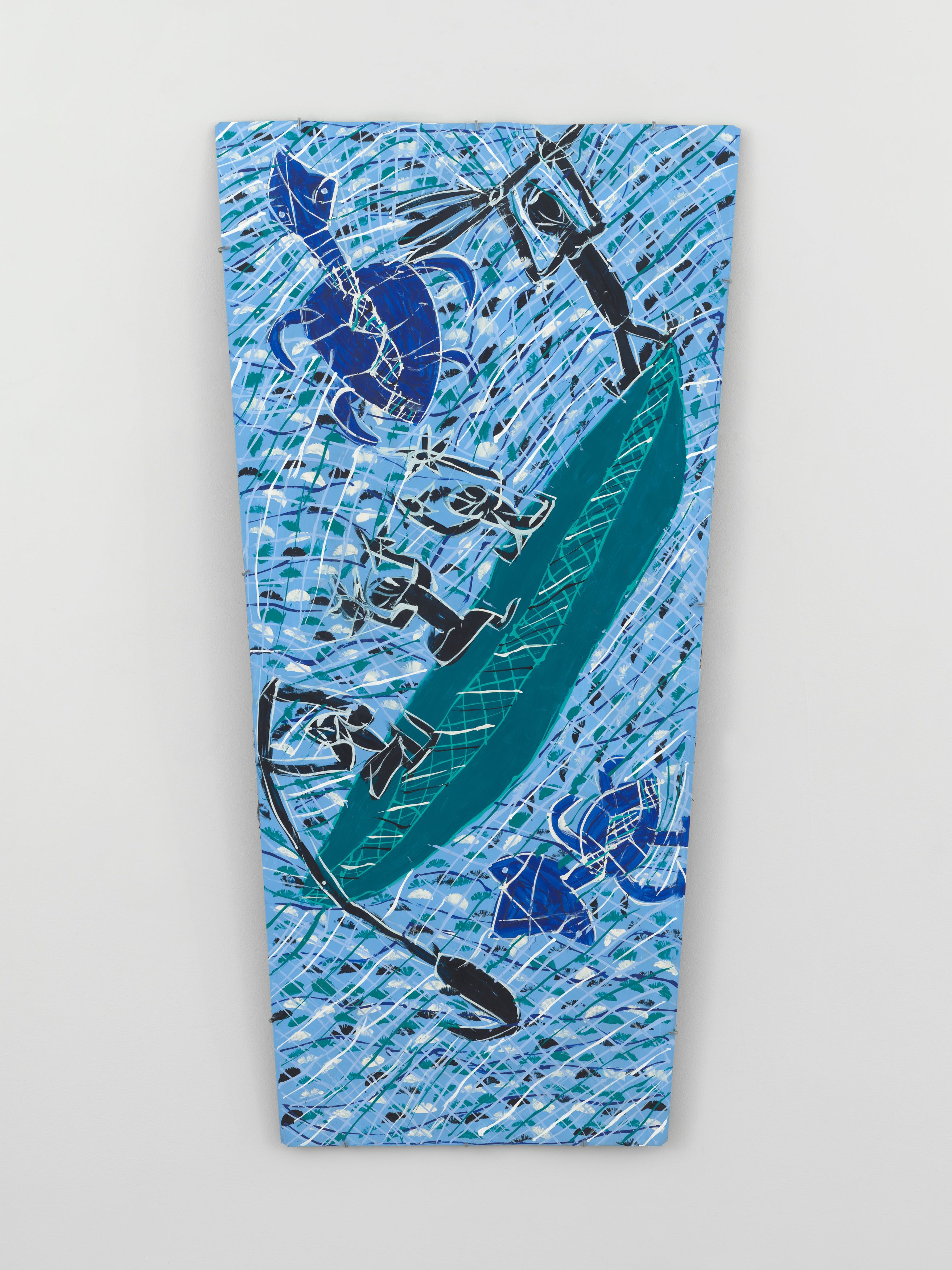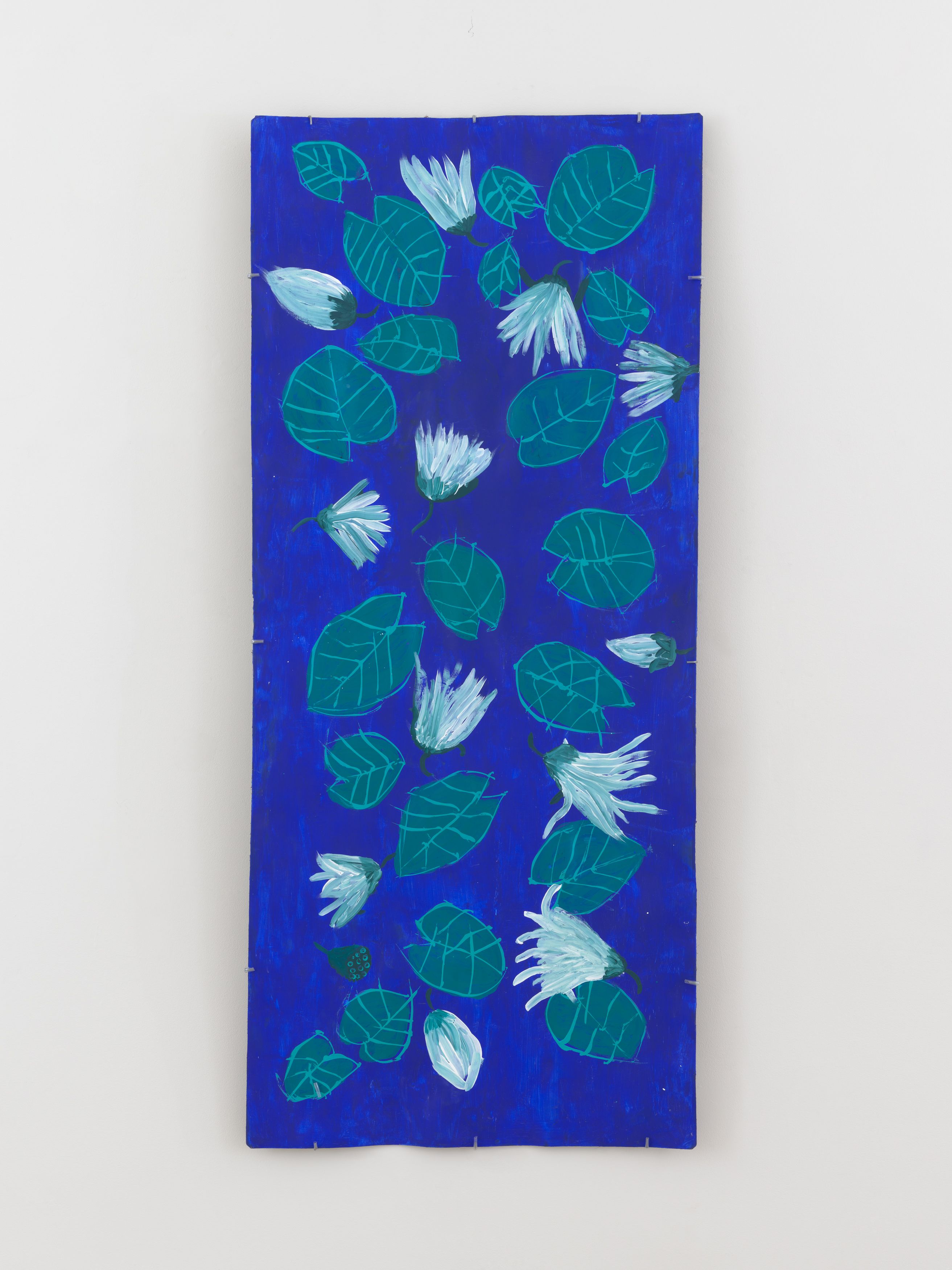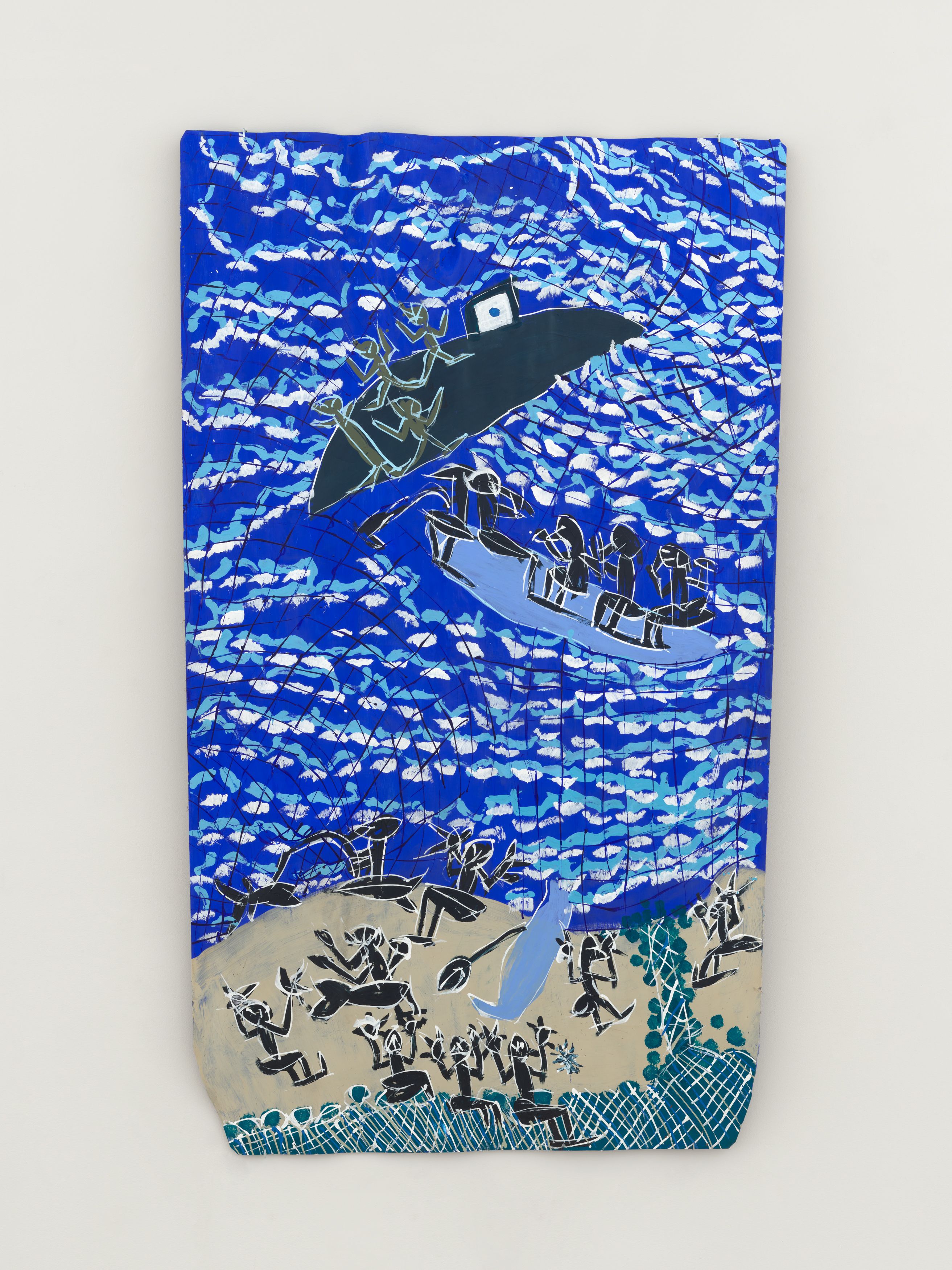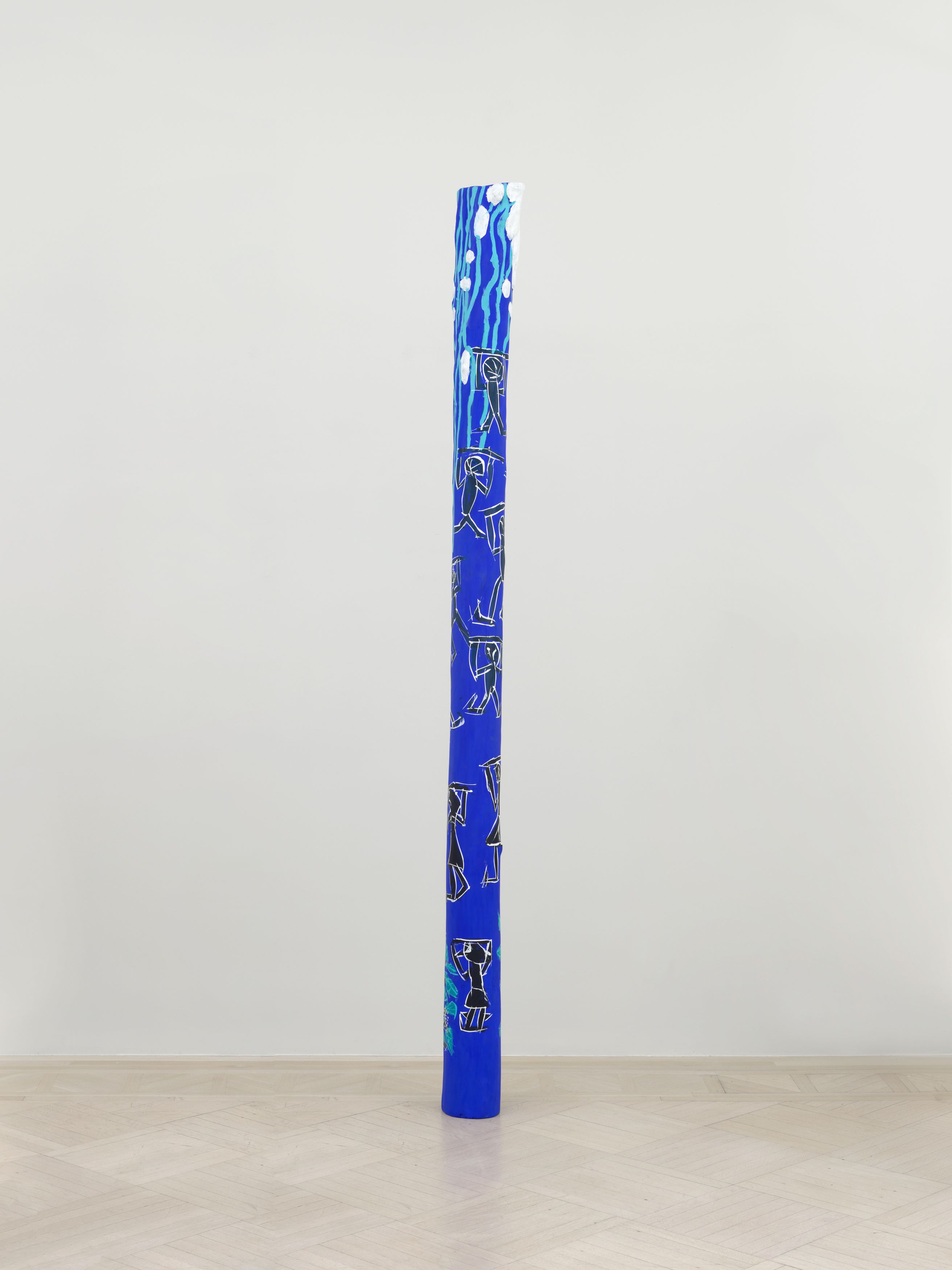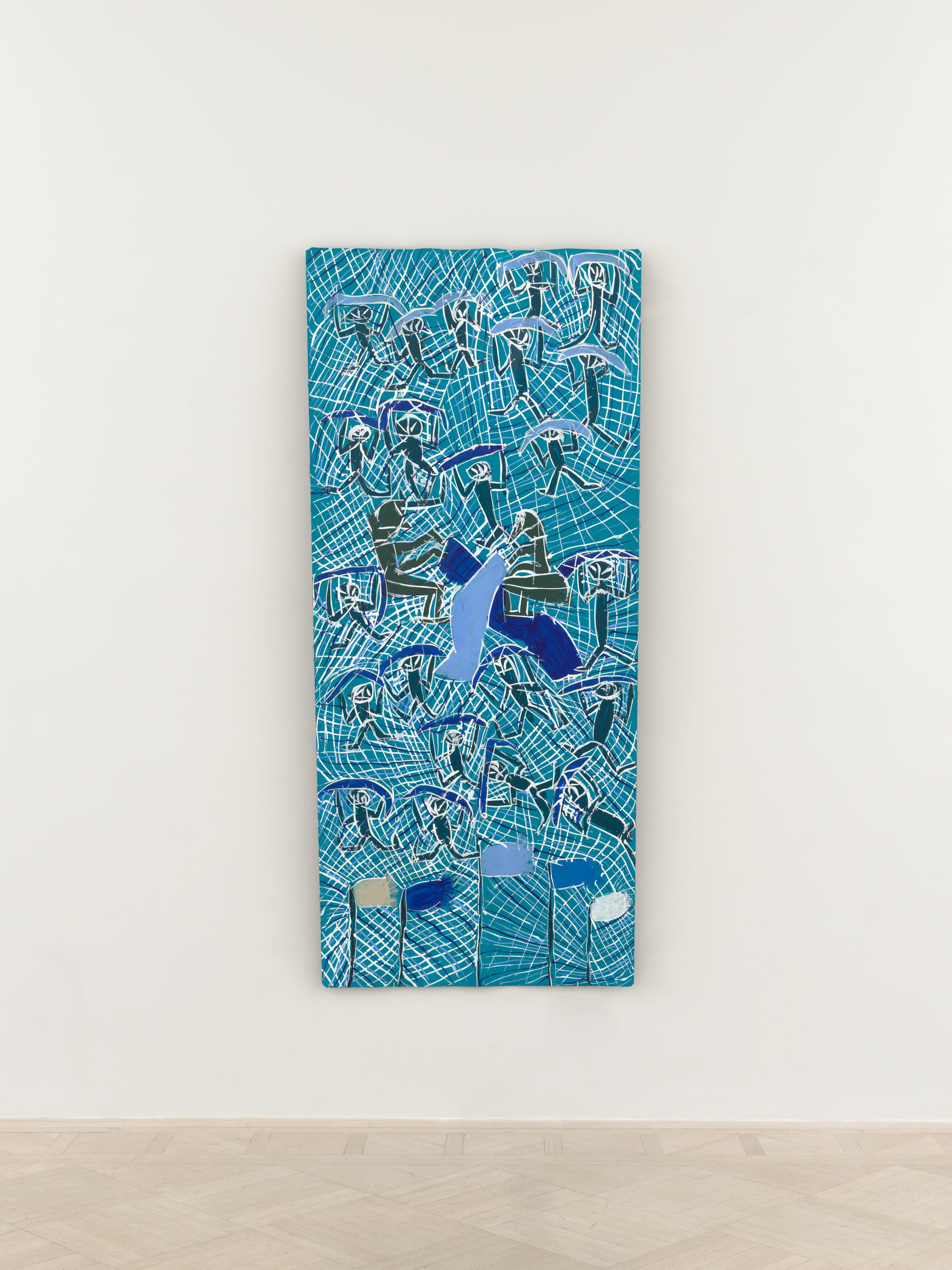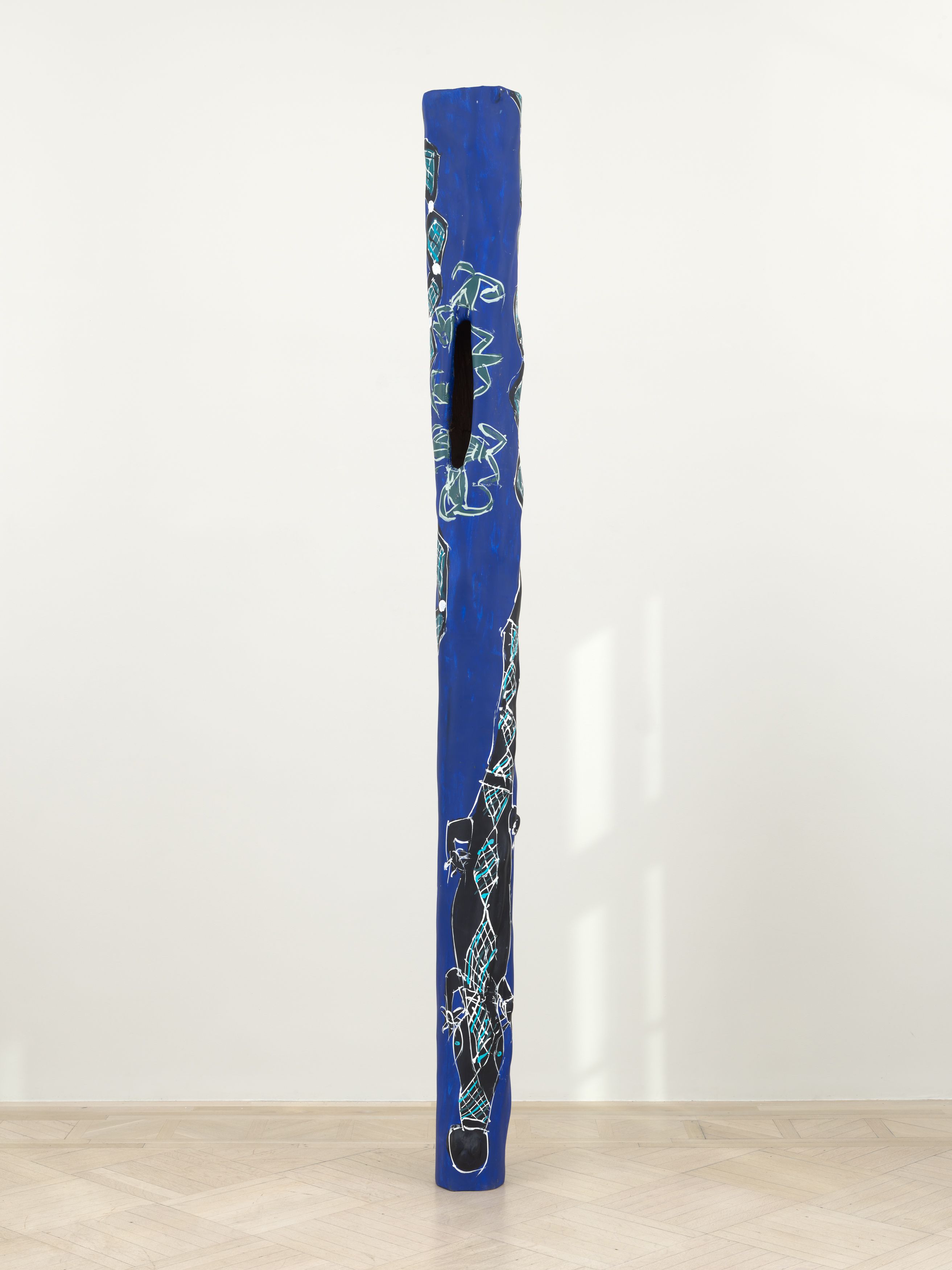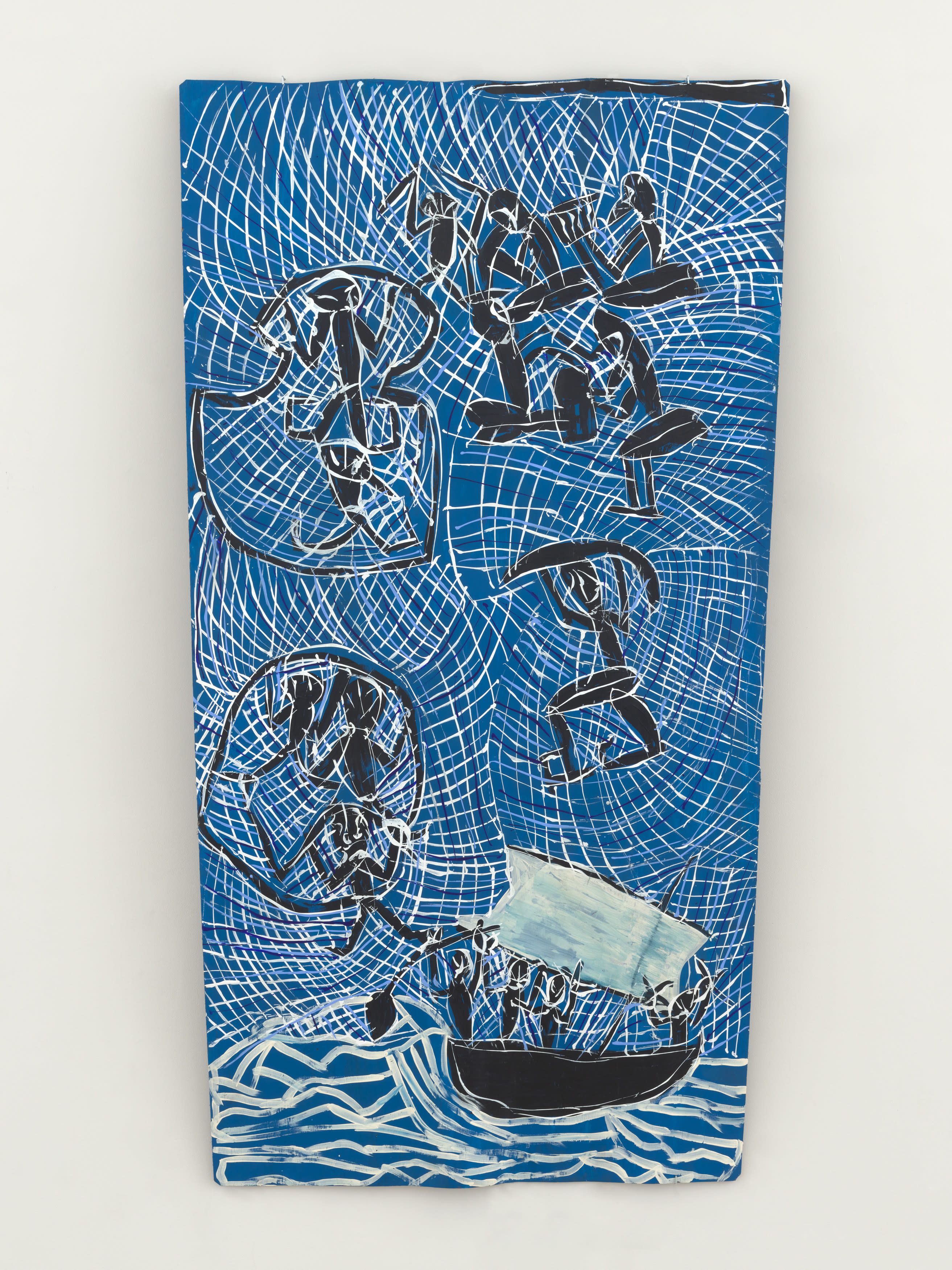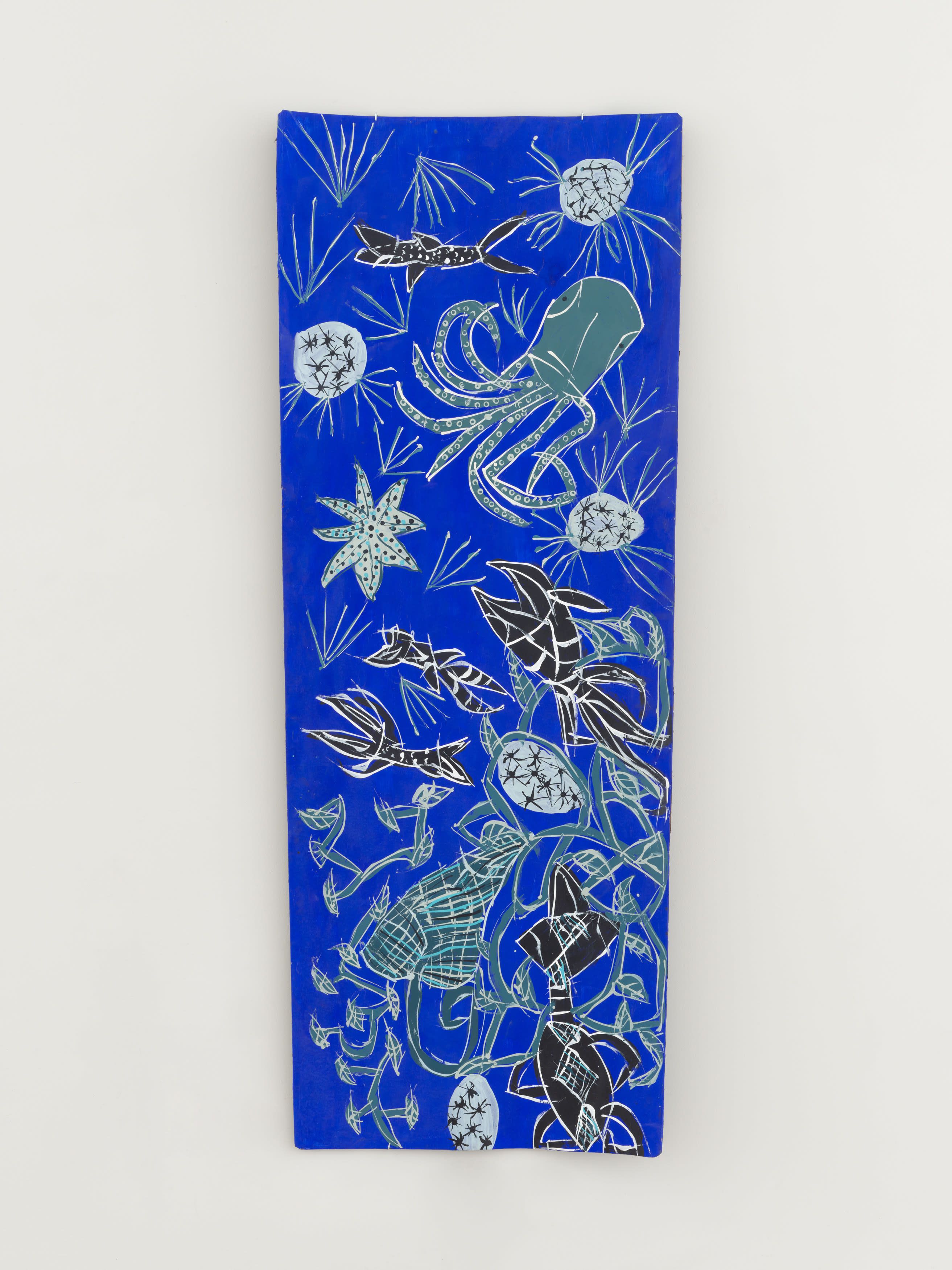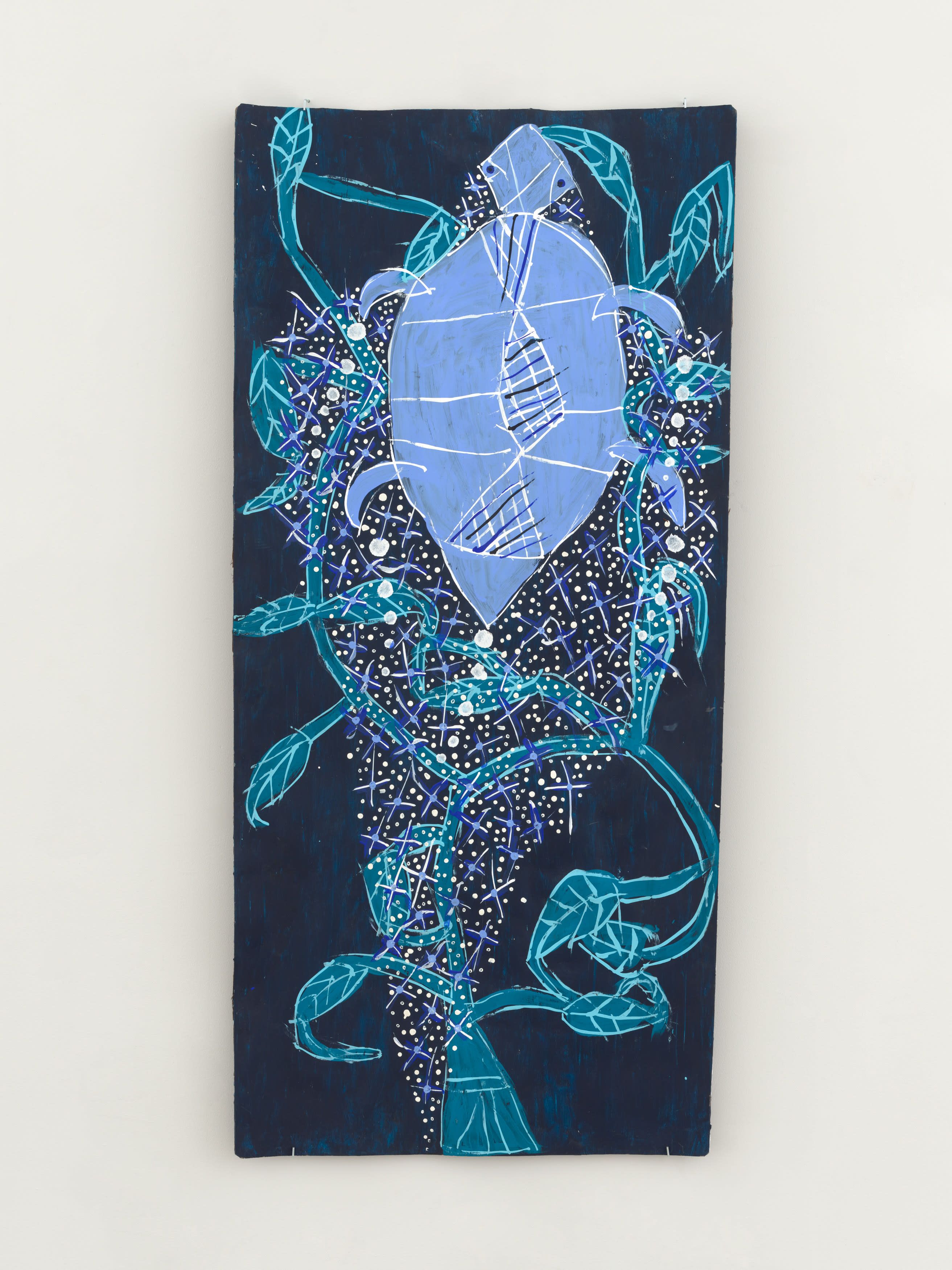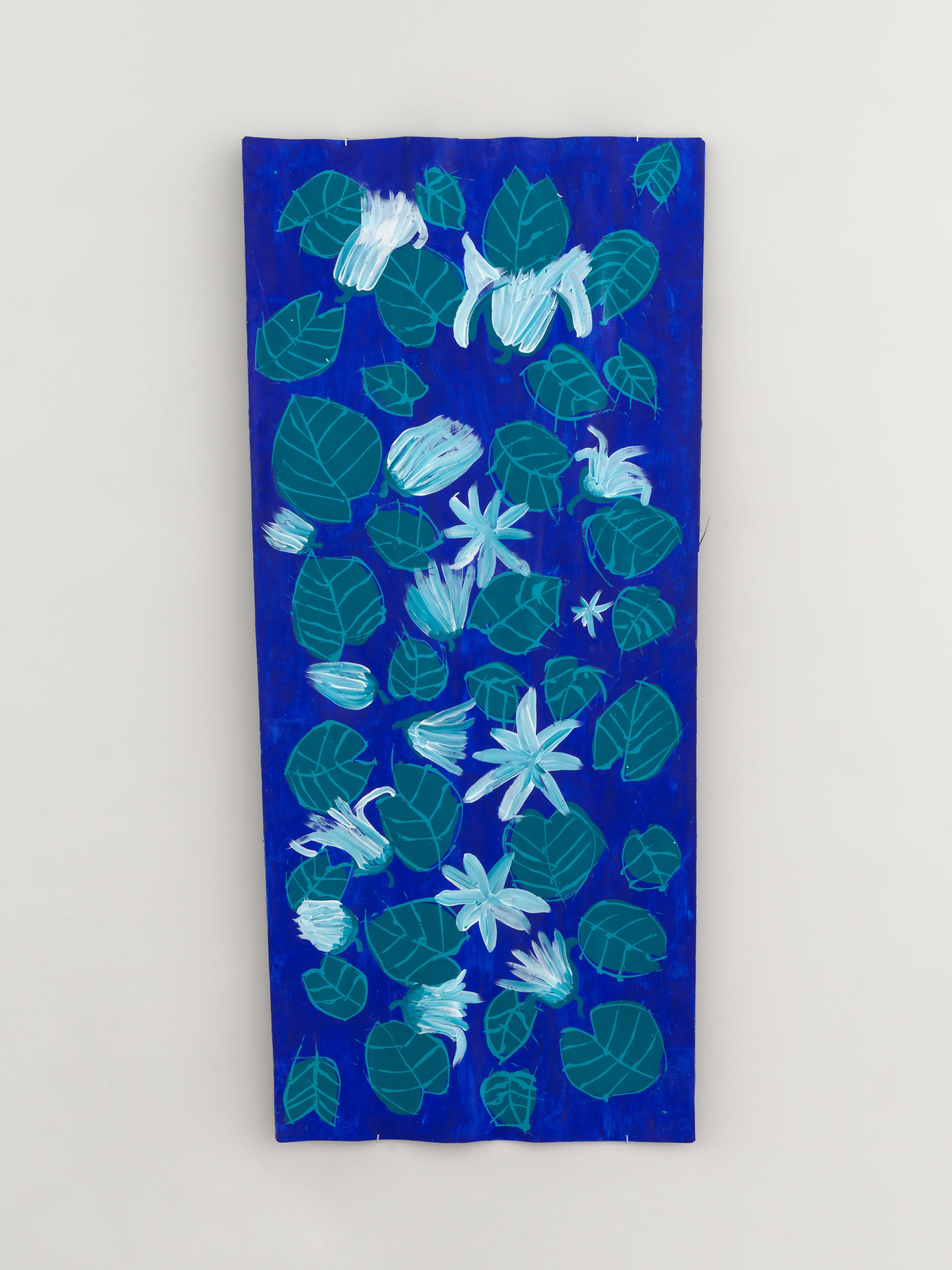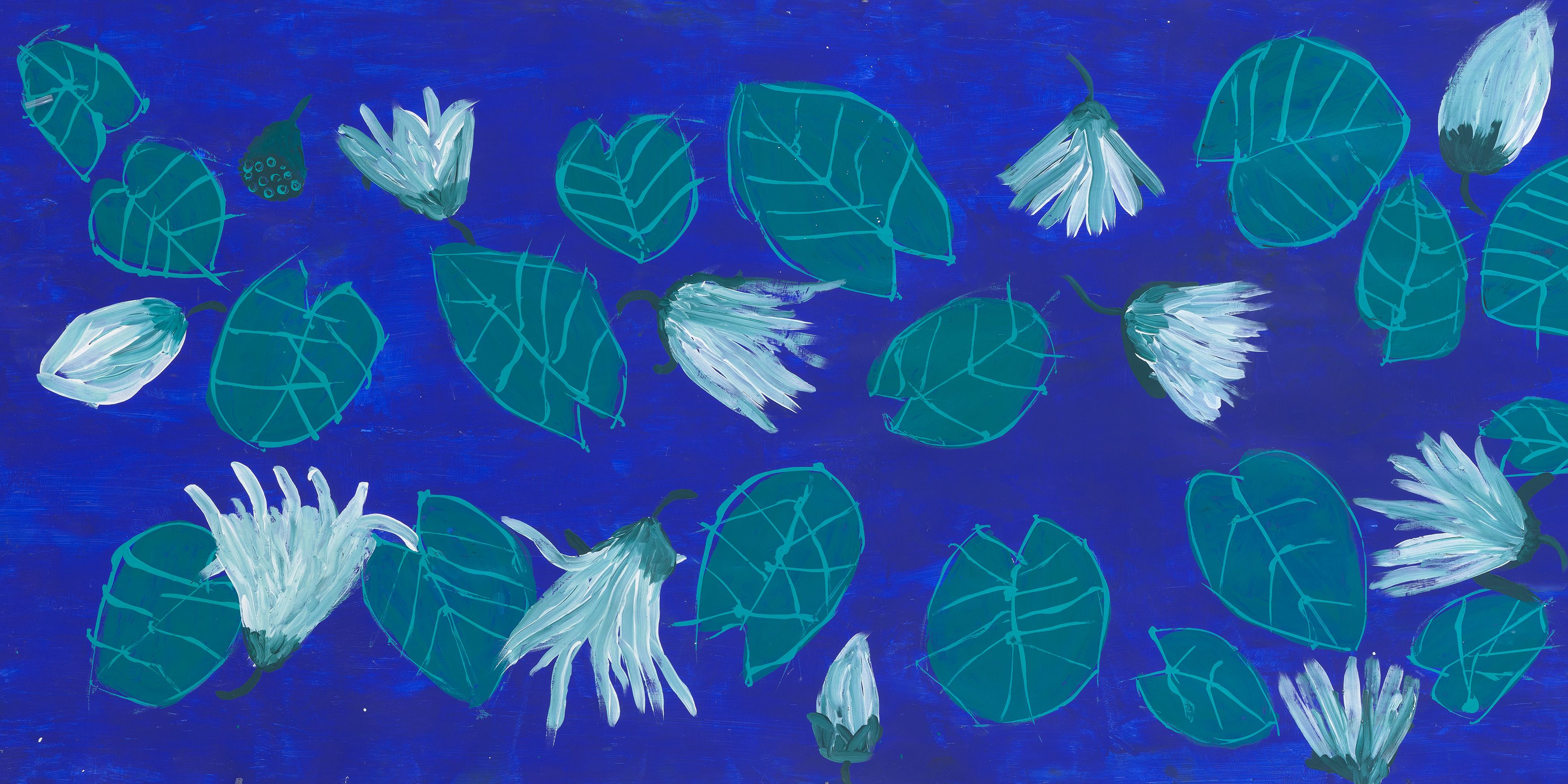
Dhambit - Rock of Ages
Installation Views
Artwork
Salon 94 presents the first US solo exhibition of Australian Aboriginal artist Dhambit Munuŋgurr. A senior Yolngu woman from coastal north-eastern Arnhem Land, Munuŋgurr is known across Australia for her distinct and innovative painting style that combines the traditional clan designs and the contemporary memories of community, family, and myth in the lived present. Executed on traditional stringybark supports, delivering narratives ever-present and bridging the past with the future.
Will Stubbs, longtime manager of Buku-Larrnggay Mulka Art Center in Yirrkala, Northern Territory has drawn upon his longstanding relationship with Dhambit help contextualize the exhibition and its title:
Dhambit Munuŋgurr comes from a community which still conducts itself within its own language of Yolŋu matha (trans. tongue of the people) and within its own cosmological structure known as gurruṯu.
Gurruṯu gives everyone a specific family relationship with every object, person and place in reality. When I say everything I mean everything! For example even a lowly maggot might be one’s brother’s wife’s brother’s daughter – a relation known as one’s Ŋäṉdi. That maggot’s position in the matrix of the universe stems from its position within the thousands of epic song poems that chart the structure of the world. In this example it is sung by the three Yirritja tribes adjacent to Blue Mud Bay – the Maḏarrpa, the Dhalwaŋu and the Maŋgalili.
Manikay is the epic song poetry akin to The Odyssey although unwritten which the elders hold in their minds and pass on as required. These songs are the accompaniment to all ceremony. One or a few men will sing the identity of the various estates of land through the eyes of the participants in the epic journey in a tense that is contemporaneous past-present-future: the everywhen.
Dhambit is named for a monolithic rock. She says “I am Dhambit the rock. I have seen this rock with my own eyes at Galiwinku (Elcho Island) when I was 18. It is on Gälpu country. It stands on the beach next to a Gaywaŋi (Casuarina Tree).”
She is indicating that the songs from which her name is taken belong to the Gälpu clan. This is her mother’s mother clan. This relationship is key to Yolŋu life and known as the backbone. Backbone implies the essential scaffold of a person’s life. The maternal grandmother clan will often have responsibility for a person’s important ceremonies.
This large monolith sits steadfast and stands against tide and time. This is why she has chosen to name her exhibition Dhambit- Rock of Ages.
Dhambit’s energy to create has itself stood against tragedy and grief. Art has carried her through a serious accident which left her body damaged but her intelligence and vigor undimmed. The three things which keep her in equilibrium are painting, smoking cigarettes, and her tireless French husband and studio assistant Tony Gintz.
She healed herself through art and literally MUST paint every day. But the physical fine motor control to place a brushstroke has gone. Each stroke must be launched from a foot away in a spearing motion. The accuracy of her aim is striking and the dynamism of each work stems from this adaptive technique.
For more information about this exhibition, please contact Andrew Blackley (andrew@salon94.com)
Press
The New York Times

